More and more car manufacturers and semiconductor manufacturers are involved in the field of smart driving and autopilot. As a result, more and more capital has begun to pay attention to LiDAR technology.
LiDAR (Lidar Solution) technology adopts advanced computer vision and radar sensor technology, and is one of the important components of the self-driving car in collision avoidance and safe driving. Prior to this, this technology was just an abbreviation for Optical Imaging Ranging and Detection. But now it has become synonymous with the next generation of automotive technology. The target position, speed, and other characteristic quantities are measured by emitting a laser beam to a target object and receiving a laser beam reflected from the target object, to sense the surrounding environment of the vehicle, and to form a 3D environment map with accuracy of up to centimeters, for the next step. Vehicle control establishes decision basis.
Now, with the influx of large amounts of capital and continuous R&D work, R&D personnel hope to find out more uses of the technology and make it a ubiquitous new technology.
LiDAR's past
Statistics agency CB Insights said that about $1.049 billion was spent on self-driving start-ups last year, involving 87 transactions, a figure that represents a 91% increase from 2015. Most of these funds are used to invest in LiDAR technology.
Grand View Research believes that the global automotive laser radar market will grow to US$223.2 million by 2024. MarketsandMarkets is even more optimistic. It believes that the application of laser radar in other areas will boost its market value. It will reach US$5.2 billion by 2022 and its compound annual growth rate will reach 25.8% in the next five years.
BIS Research believes that the market size of automotive laser radars last year was only 65 million US dollars, but the compound annual growth rate will remain in double digits in the next 10 years. Global Market Insights is more concerned about the application of laser radar technology in other fields, saying that its market size is expected to increase from $3655.5 million in 2015 to $1.1 billion in 2023.
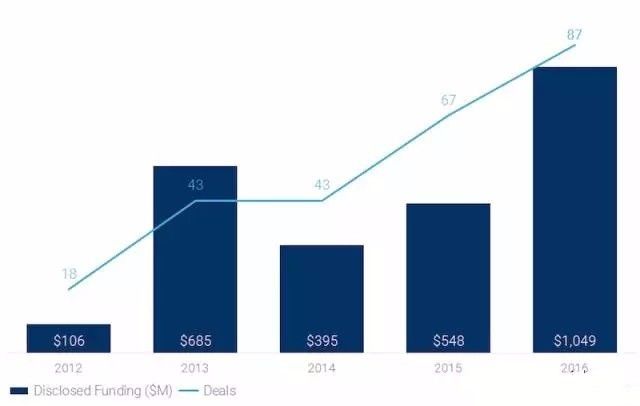
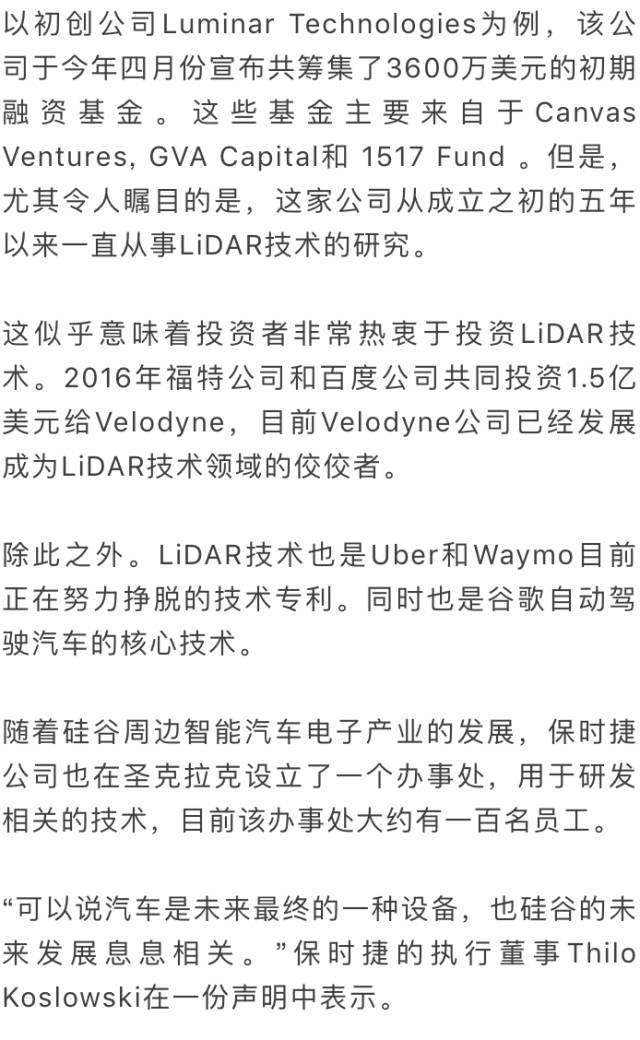
Based on current information, it is not yet clear if Porsche will engage in laser radar technology research in Silicon Valley. Despite this, the German car manufacturer will always pay close attention to smart driving and autopilot technology and conduct related research in Silicon Valley.
As another example, Quanergy Systems, a California-based company, is primarily engaged in radar research and has received more than $120 million in venture capital from companies such as Daimler Samsung.
“It can be said that LiDAR technology can provide very powerful sensors for autonomous driving, but from the current development situation, due to cost considerations, such sensors can not be used for commercial.†Louy Eldada, CEO of Quanergy Systems, talks about LiDAR Said.
The reason why this company is currently receiving so much attention is mainly based on two reasons. On the one hand, reliability, Quanergy Systems hopes to be able to produce highly reliable products. On the other hand, it is cost, and Quanergy Systems hopes to be able to produce in a semiconductor wafer factory at a low cost based on the new model process. “We are a small company. The work we do is to complete the internal design. The production of the product still depends on the outsourcing of semiconductor fabs such as TSMC's company factory,†said Louay Eldada.
Currently Quanergy Systems already has a large number of strategic investors, of which Samsung is one of the largest investors. It is understood that Samsung is currently working on laser radar for smart phones, as well as sensor technologies for home appliances and other products.
After receiving A round of $30 million in financing, Quanergy Systems received another $90 million in funding last year. “More and more companies are beginning to focus on laser radar technology. But for many investors, they do not understand the technology. So from the current situation, Quanergy Systems does not have very strong competitors.â€
It is understood that Quanergy Systems was founded in 2012. Prior to this, Louay Eldada spent 27 years in related technology for in-depth research and received a doctoral degree from Columbia University.
LiDAR's Technology Prospects
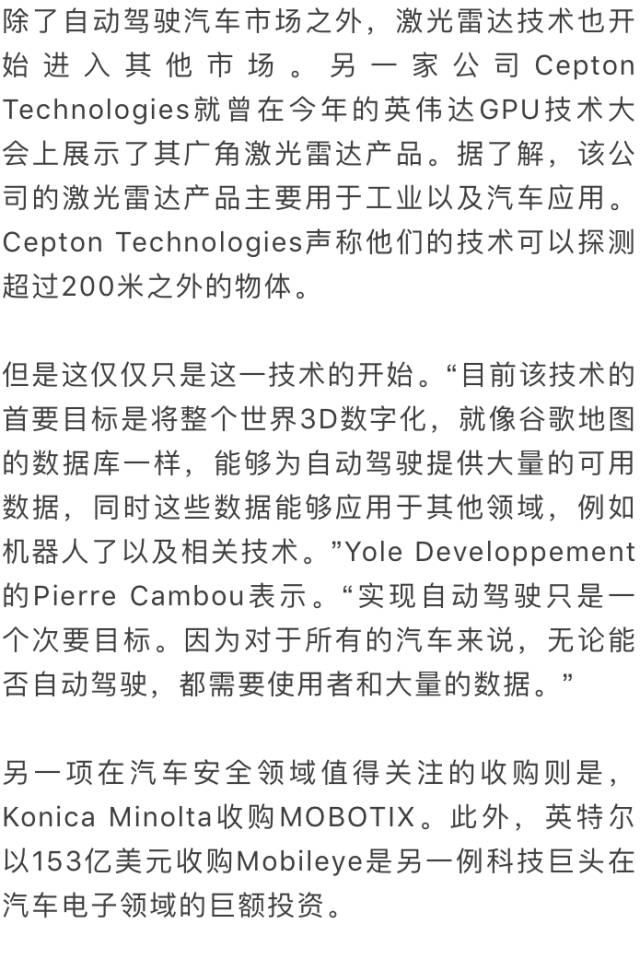
The famous research institution Gartner once had a claim that an industry must go through a period of high-speed inflation before it reaches a point where it is about to collapse. So is this true for the self-driving car industry? Will it soon burst?
"I'm not a loyal fan of the research organization Gartner. So for me personally, my theoretical framework is more biased toward the bottom theory of Professor Clayton Christensen at Harvard University," said Pierre Cambou.
"From the application of ADAS technology, this technology is mainly used to reduce the accident rate of the car. In the future we will see that this technology will be used in large quantities, so this technology will not enter the period of extinction. But for the automatic driving This is another concept for cars. At present, Google has done a very good job in this respect. The first self-driving car will come as a first movie or television. I will be eager to know The answer."
From the perspective of the development of the Internet of Things, the industry is currently in a downturn. Is Autopilot technology going to follow the Internet of Things?
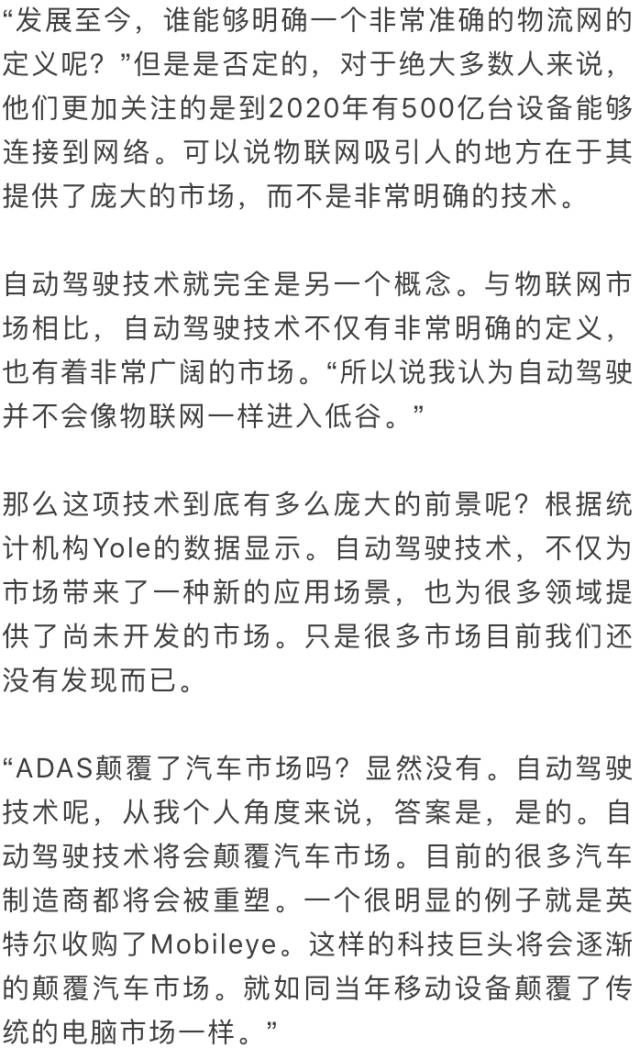
For Cambou, artificial intelligence will also be one of the key technologies for self-driving cars. He believes that every processor manufacturer will pay attention to this technology, because this technology also has a great relationship with the visual sensor.
Global automotive laser radar market segmentation
Divided by application type: ADAS, AEB, Adaptive Cruise Control (ACC)
Divided by car type: Audi, BMW, Cadillac, Ford, Mercedes-Benz, Tesla, Volvo
By the year 2025, the market for various types of applications will show a growth trend. With the rise of LiDAR's reputation among consumers and competition among similar products, more and more car manufacturers will pay more attention to this equipment in the future. Integrate it into its own vehicle. In addition, the technology is currently used for drones, urban planning and meteorology.
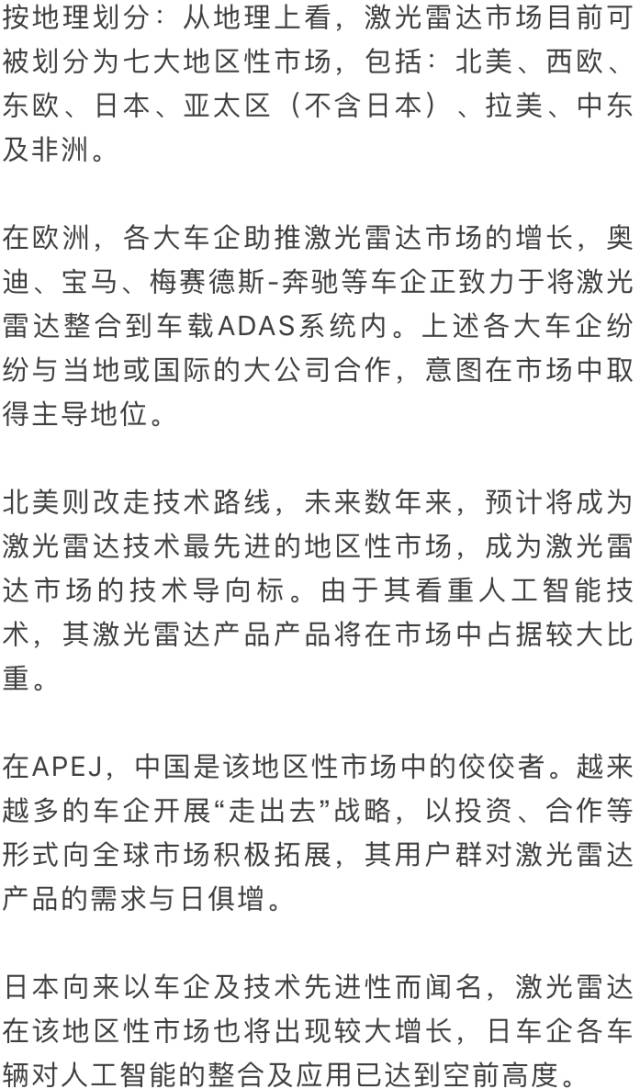
In the Middle East market, vehicles equipped with ADAS functions are selling well, and sales will show a substantial growth. As the user groups in this market place more emphasis on a safe cruise driving model, the Middle East will become a regional market with a large increase in sales.
Global Investment Competition
What we need to understand is that the investment industry does not have very clear geographical and political boundaries. Although in fact in the early stages of the development of the investment industry, the vast majority of investment occurred in the United States.
Hesai is a laser radar company founded in 2013 in Silicon Valley, USA. Relocated to Shanghai, China in 2014. The company has just obtained a round of 16 million U.S. dollars in investment from its investment advisor in Beijing. Many investment companies in China have also participated in this investment.
Earlier this year, California’s TetraVue also received $10 million in financing from various entities including Robert Bosch Venture Capital, Nautilus Venture Partners, Samsung Catalyst Fund, and Hon Hai Precision Industries. It is understood that the company's laser radar technology is mainly based on flash memory. TetraVue was founded in 2008 and was previously supported by angel investors and received a $10 million government grant.
Blackmore Sensors and Analytics of Bozeman recently received a $3.55 million investment. For the development of FMCW radar technology. The company expects to provide prototype cars and deployable monitoring systems in 2010. In addition, the company also obtained a two-year innovation fund contract provided by the US Army.
Civil Maps, located in Berkeley, their technology is able to convert laser radar mapping data into a map of autonomous cars. The company received $6.6 million in funding last year. Ford Motor, AME Cloud Ventures, Motus Ventures, StartX Stanford and Wicklow Capital all participated in this investment.
TriLumina obtained a $9.2 million investment from Caterpillar after being separated from the Sandia National Laboratory. It is understood that the company was established in 2010. Its main research and development is based on flash-based solid-state lighting modules to develop automotive laser radar system simulation devices.
Baraja, Sydney, Australia has attracted a million dollars in investment. The company mainly develops laser radar technology for the Australian federal government.
Innoviz Technologies, based in Israel, last year raised $9 million in Series A investments. The company’s lidar sensor technology was initiated by veterans of Israeli intelligence.
Similarly, there is another company in Israel that Oryx Vision is developing laser radar technology. Oryx Vision uses remote infrared lasers instead of laser radars. The company was established in 2009 and is headquartered in Petak Tikva.
Judging from the current development situation, the capital of many countries such as China, the United States, and Australia has begun to invest heavily in autonomous driving technology. This may mean the arrival of the era of laser radar technology!
Infrared Pen,Infrared Touch Pen,Infrared Tablet Stylus Pen,Infrared Stylus Pencil
Shenzhen Ruidian Technology CO., Ltd , https://www.wisonen.com